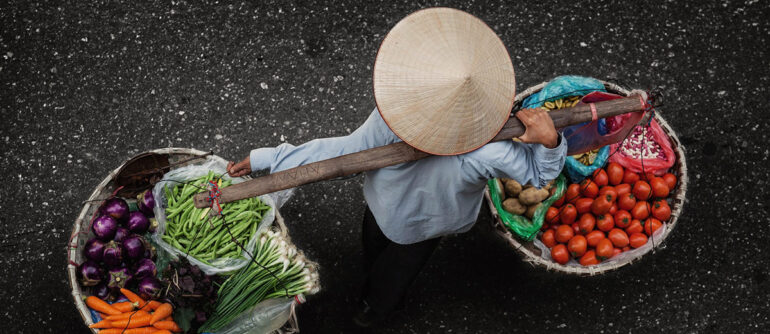We may earn a commission when you purchase through affiliate links. Learn more.
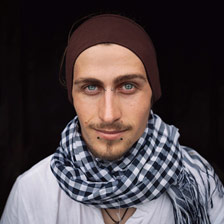 We’re sitting down with Drew Hopper, a young Australian photographer who has become well known for his vibrant, atmospheric landscape photography work. Based in New South Wales, Drew Hopper has recently returned from a three month photography adventure in Southeast Asia, visiting Thailand, Cambodia, Laos and Vietnam and is expanding his work into the travel photography genre.
We’re sitting down with Drew Hopper, a young Australian photographer who has become well known for his vibrant, atmospheric landscape photography work. Based in New South Wales, Drew Hopper has recently returned from a three month photography adventure in Southeast Asia, visiting Thailand, Cambodia, Laos and Vietnam and is expanding his work into the travel photography genre.
In this interview we’ll be talking with Drew about his travel experiences in Southeast Asia, learning how to prepare and pack for an extended photography trip, and getting some great tips and advice from him on how to capture memorable travel photos.
1. Tell us about how your photography journey began.
It’s difficult to look back and pin point the beginning of my photographic journey, but I guess the passion for the natural world was discovered from a young age when I was traveling around Australia with my family in a motorhome. I have always loved traveling to new locations, however I had no idea that this lifestyle would transpire into a career in photography. As a kid I spent countless hours outdoors, I was never sat in front of the television and isolated from the world. When I reached my mid teenage years my parents bought me my first DSLR camera as a birthday gift, so I guess that’s when the journey began. Nature inspired me to be creative with my natural surroundings. Where I live was the ultimate photographer’s playground, not only did I have access to a beautiful stretch of coastline, I also had the lush forests and countryside at my doorstep that kept my passion alive to learn photography and give back what I was fortunate enough to experience in my childhood.
2. You recently got back from a trip to Southeast Asia — tell us about where you went and how you planned your itinerary. Looking back, is there anything you would change about your trip?
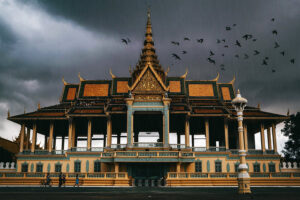 Yes, I returned in Mid December 2013 from an incredible 3-month backpacking adventure with my girlfriend Jess, through Thailand, Cambodia, Laos and Vietnam. The itinerary wasn’t exactly planned but we had a few sights and things we wanted to see, but had no idea what it would turn into the adventure that it did. Most of our planning was based around two cultural festivals. A couple of our friends had just returned from backpacking SE Asia, so we picked their brains and built a rough itinerary from their travels, however ours needed to be different in order to make it to the festivals. There is the usual backpacker route, which is more, or less what we did except we did it in reverse to correspond with the Loy Krathong and Yee Peng festivities in Thailand. Lonely Planet books also came in handy for researching specific attractions and avoiding the crowds, however it wasn’t always the best method because many other travelers also carry the books with the same intentions, so we left the books at home and figured it out ourselves.
Yes, I returned in Mid December 2013 from an incredible 3-month backpacking adventure with my girlfriend Jess, through Thailand, Cambodia, Laos and Vietnam. The itinerary wasn’t exactly planned but we had a few sights and things we wanted to see, but had no idea what it would turn into the adventure that it did. Most of our planning was based around two cultural festivals. A couple of our friends had just returned from backpacking SE Asia, so we picked their brains and built a rough itinerary from their travels, however ours needed to be different in order to make it to the festivals. There is the usual backpacker route, which is more, or less what we did except we did it in reverse to correspond with the Loy Krathong and Yee Peng festivities in Thailand. Lonely Planet books also came in handy for researching specific attractions and avoiding the crowds, however it wasn’t always the best method because many other travelers also carry the books with the same intentions, so we left the books at home and figured it out ourselves.
3. Can you tell us about the gear you use for your travel photography? What is typically in your camera bag while traveling?
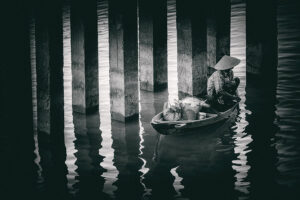 It wasn’t easy deciding what to pack and what to leave at home, but I knew it wasn’t going to be easy being my first overseas trip. I spent hours researching online how I could minimalize my photo kit so that it was lightweight for the airline baggage restrictions without forgetting the necessities. I took away with me the Canon 5DMKII, 16-35mm f/2.8L, 24-70mm f/2.8L, Canon 70-200mm f/2.8L and Sigma 35mm f/1.4 lens. I also carry 3 genuine Canon batteries, cable release, polarised filter and lightweight Roadtrip series travel tripod by MeFoto.
It wasn’t easy deciding what to pack and what to leave at home, but I knew it wasn’t going to be easy being my first overseas trip. I spent hours researching online how I could minimalize my photo kit so that it was lightweight for the airline baggage restrictions without forgetting the necessities. I took away with me the Canon 5DMKII, 16-35mm f/2.8L, 24-70mm f/2.8L, Canon 70-200mm f/2.8L and Sigma 35mm f/1.4 lens. I also carry 3 genuine Canon batteries, cable release, polarised filter and lightweight Roadtrip series travel tripod by MeFoto.
The most used lens would have been the Sigma 35mm f/1.4; this was the perfect walkabout setup. The wide angle was used a lot for architecture and landscapes but for lowlight scenes the f/2.8 wasn’t quite quick enough, so that is when the trusty 35mm found itself on camera 80% of the time. I probably could have left the telephoto at home, but it also came to good use when photographing people when I wanted to observe rather than shove a lens in front of someone’s face and make them look and feel uncomfortable.
4. What about other bits and pieces you packed to take away with you that you recommend other budding photographers/travelers pack?
When traveling to a different country it always pays to do your research before on what power sources they have and what type of adapters you’ll need. Although most supermarkets and corner stores will be able set you up with the right types I made sure I had correct fittings. By packing a 4-way powerboard with surge protector. I was able to plug in my laptop, phone charger, camera charger and iPad all at the same time. Most cheap hotels don’t supply many wall sockets so being able to plug and charge multiple devices was extremely handy and time saving.
Another piece of equipment I never leave the house with is a microfiber cloth, perfect for wiping away fingerprints and dust from the lens. The cloth is also great for protecting any filters that end up floating around loose in your bag. I generally take this along with a rocket blower for blowing dust off the camera sensor.
Memory cards are also crucial, without them your time spent will be a depressing one however you can buy cheap cards in Asia, but its always good have at least 2x 16gb ready. To protect my memory cards I use a 2x hard waterproof/shock proof cases that are easily recognisable in my camera bag with fluorescent markings, which is ideal when shooting at night.
A portable hard drive is essential for making backups of all your images while traveling. I couldn’t imagine anything worse than having your laptop stolen and losing your entire image archive. 1TB would be the minimum amount, and I had another 1TB drive in my Macbook with a 500GB as well. I filled both of the terabyte drives and kept the 500GB free for processing on my laptop without losing performance.
5. Are there any unique challenges and hazards as a travel photographer when it comes to your gear? For instance, keeping your batteries charged in remote locations and preventing theft and damage.
I was worried about how and where I could charge batteries while on the road but this was never an issue. I always had a base where I could charge and clean my equipment, usually at our hotel or in a café. Making sure your insurance plan covers your valuables is a huge priority. If you cannot afford the insurance then you definitely can’t afford to travel in my opinion. Theft was never an issue, however I traveled with a Packsafe bag system to keep my bag secure whenever the location felt dodgy. I only used it twice and both times I could have gotten away without out, but it pays to be safe than sorry.
7. Can you share a few of your favorite travel photos and tell us about the steps that went into them, from getting to the locations to photographing and eventually processing the shots?
Festival of Light, otherwise known as Yee Peng Lantern Festival, is an unforgettable spiritual event held all over Thailand. Yee Peng takes place on the full moon of the second month, as the twelfth month in the Thai Lunar Calendar corresponds to the second month in the traditional calendar of the old northern Lanna Kingdom. The festival features millions of illuminated lanterns being launched off into the night sky to create an almost ‘milky way’ effect gracefully floating off into the distance. No words, images or stories will ever do this incredible festival justice; you really need to be there amongst the magic to truly appreciate just how amazing it is. I finally got to go and see what this incredible celebration is all about in November 2013, and can easily say that it was the most uplifting thing I have ever witnessed.
After months of preparation and excitement we were only a few hours off seeing our dream festival. We managed to find a taxi service and as you can imagine it was chaos trying to get transport to the venue on time. Fortunately we arrived early enough and found a spot amongst the thousands of other people who also arrived early. We waited 2 hours from when we got to the gate for the mass release of lanterns.
I can still clearly remember the enormous cheer of happiness and good luck as thousands of lanterns took to the night sky, gently floating up but moving very quickly with the slight breeze. The contrast of warm light radiating from above, and all the emotional faces looking up into the milky way of lanterns was so beautiful. Many smiles, tears and lots of laughter transpired the evening into a massive communal celebration, people sharing the same experience on the same level, simply unbelievable.
Photographing the magic as well as experiencing it was tricky to balance both. I found myself shooting more than celebrating, but I did find the time to release some lanterns with my girlfriend. I shot the entire event with my Canon 16-35mm f/2.8 L wide angle, I wanted to include as much of the celebration as possible without missing a second of it. It was considerably dark even with the thousands of lanterns in the sky, so I needed a higher ISO of 1600, and a wide aperture of f/2.8 in order to use a quick enough shutter speed to capture the moving lanterns, my exposure was 1/40s which was only just fast enough to freeze the lanterns. Post-processing this image was fairly simple; nothing fancy or technical was done to achieve the final result. Basic RAW conversion adjustments, contrast, hues and removal of fringing, before moving into Photoshop CS5 to adjust levels, curves, dodge/burn, resize and sharpen for web. The natural beauty of this evening did not require much editing, I like the natural ambience created by with lanterns drifting off into the night sky.
One of the many memorable moments from Siem Reap, was being part of this Cambodian family being blessed by a Buddhist Monk inside Angkor Thom in the Kingdom of Cambodia. I can still feel the energy and emotion felt by both the Monk and the family as he poured holy water over their bodies to cleanse the soul. I walked away quite emotional after having experiencing such an incredible raw moment. In my opinion this is one of my strongest images from my Southeast Asia trip, it captures the beauty of the Cambodian culture in an artistic and creative way, just the type of images I was hoping to capture on my backpacking travels through Asia.
The use of my Sigma 35mm f/1.4 prime lens was the perfect choice, wide enough to capture the family and monk in frame together so that the image was put into context. By using a shallow DOF of f/1.4, I was able to compensate enough light to reach my sensor while maintaining a quicker shutter speed. Another advantage of using a wide aperture was being able to separate my subject from the background. The family was unaware that I was photographing their ceremony; at least until the little girl decided she wanted to make peace signs at the camera.
Fortunately, I was able to take a few shots before she blew my cover, however the family was very grateful that I documented this for them and they really appreciated seeing the shots I afterwards. Post-processing was very basic, this image did not require much editing. A few tweaks with curves, levels, contrast, hue/saturation and slight vignette were made in Lightroom 4 before converting and opening in Photoshop. I applied some dodge/burn to highlight the center of frame where the family were positioned and added some clarity to the water being poured over their heads, while keeping the highlights in the background relatively untouched apart from a small adjustment in white balance to add warmth to the overall atmosphere.
In this photo, an elderly woman is burning incense inside the smokey Thien Hau Pagoda, in the heart of Ho Chi Minh City (Saigon), Vietnam Southeast Asia. Built by the Cantonese Congregation in the early 19th century, it is dedicated to the deity Thien Hau and always has a mix of local worshippers praying and tourists photographing, beneath giant incense coils suspended from the ceiling above. I could only handle being inside for half an hour before the dense smoke enveloped my lungs and forced me to leave.
Finding this location was fairly simple, I did some research online and mapped it out on Google Maps just to make sure it was achievable. On arriving to the front entrance we were greeted by a small elderly Vietnamese woman selling incense sticks, tissue paper and other bits and pieces. The incense is purchased to burn inside the temple, however we read online that it’s much cheaper to buy the incense and paper inside, so this is what we did. Walking into this temple felt like walking into a fireplace, except it was an incredibly beautiful scented fireplace. I scouted the area for compositions, and having already done a bit of research I knew morning was the best time for the right lighting. Sunlight spilled down through the opening in the roof and filtered through the smoke that lifted for the ceiling. It was an awe inspiring sight, it sent me a little trigger happy, firing continuous bursts trying to capture every little detail as the smoke gracefully danced before my eyes.
I shot at a longer focal length than I had originally planned, basically to keep my distance from smoke as I was finding it difficult to breathe, let alone focus or see what I was doing. Post-processing this image was a little difficult; I wasn’t entirely sure which way I wanted to take it. I originally thought that I’d end up going monochrome, but that changed after importing into Lightroom and noticing the cyan tinge around the highlights created from the dark blue wall in the background. Clarity was increased by 30% for more definition in the smoke, and vignette was added around the image to draw the viewer into the center of frame.
8. Your travel photography portfolio includes quite a lot of portraiture. Walk us through your process for creating a great travel portrait?
I’m still very new to photographing people, however it’s safe to say that there are essential characteristics that most photos share. Composition and light are the two key elements I’m always chasing. When I am out walking the streets with my camera, I am constantly scanning my surrounds, always pre-visualizing the next shot. Almost all my travel portraits have been spontaneous moments, most of the time my subject won’t even know I have taken their photo. I find this approach works well capturing the daily lifestyle and culture of local people in their natural environment, but I also like to take things a little more intimately and move in closer to my subject. This is when communication skills came into play, being able to speak some of the language was helpful, however I wasn’t traveling long enough to learn much of the local language for it to be beneficial for me. I was able to say hello, ask how their day was and say thank you, which was usually all I needed to say to gain their trust. As soon as the subject felt at ease with my presence, I was able to freely begin photographing them without any interaction; this was usually when my best portraits came about.
9. It’s easy to spend all your time behind a camera while traveling — how do you manage to balance your work as a photographer with spending time actually experiencing the locations you visit?
I like to call myself a ‘digital nomad’; all my time usually consists around scouting locations, shooting, processing and marketing myself online. It sounds like a dream life to most people, but it’s not all fun and games especially when you are a struggling artist trying to make a career out of it. The upside of the trip we went on was that it wasn’t work related, I was not hired or contracted to work for any companies, and it was purely a freelance photo holiday with my girlfriend. This gave us plenty of time to do the stuff we wanted to do together as a couple and I managed to find time to photograph along the way. I knew it was going to consume me on a photographic level, which it definitely did. I was told many times by Jess, to slow down and enjoy the moment. I’m actually thankful for those words because I did find that I was pushing myself way too hard to get the photos I was pre-visualizing in my mind. Our time in Asia as a couple was a beautiful 3 months spent meeting new people, visiting amazing places, eating amazing food and learning. I learnt that it’s important to build time into the schedule for relaxation away from what consumes you.
10. What do you think makes for a good travel photograph and what tips would you offer to amateur travel photographers trying to improve their photography skills.
There are many elements and different techniques that can make or break a good travel photograph. Having not photographed the travel genre before, I was open to all the opportunities that were placed before me. One of the toughest things I found when trying to capture local people was putting the subject into context with the location so that the image told a story. Taking intimate close-up portraits of someone’s face is always going to be interesting but it doesn’t always give the viewer much sense of location. By shooting with my 35mm lens I was able to capture people in their natural environment, going about their daily lifestyle in harmony. Being contextual would be my biggest tip that I learned right from the beginning of our trip.
Another valuable lesson I picked up on while traveling and photographing the local people was their personalities and how they differed from their natural surroundings. People seemed most comfortable when their environment was familiar to them and when they were doing something familiar. This usually involved waking up early in the morning when people were working. Most people worked early to avoid the heat of the day. As soon as they were preoccupied they looked comfortable which made for natural looking portraits.
11.Traveling to exotic locations is the glamorous side of travel photography. Tell us a bit about the business and marketing side — once you’re back from your travels, how do you spend your time?
I would say that 50% of my time is spent at the desk on my computer processing and networking my business online. I rarely get out with my camera these days to photograph new material because I’ve got such a large archive from Asia, so this keeps me busy for the most part. Advertising and marketing my work to a global market would consume the other 20% of my time in front of the computer and the other 30% goes into updating my website content, adding new images to the site, replying to emails, equipment upkeep and location scouting.
12. What lies ahead for you and your work as a photographer?
It’s difficult to say what the future has installed for me, but I have many ambitious goals and dreams, which keep the fire alive. I’ve already started planning the next overseas adventure, so that is one of the priorities to work towards so that I can further develop my skills as a traveling photographer. I’d eventually love to exhibit my travel images somewhere, potentially stating up my own fine art photography gallery and workspace. Photo workshops are also in the pipeline, so this is something to stay tuned for on my website.
13. Where can we find more of your work, and do you sell prints?
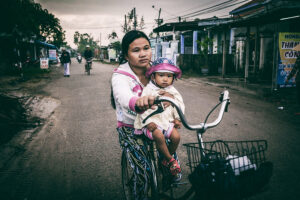 Yes, my website is always being updated with new content and prints are available for almost all my photos posted on the site. If you need any information please don’t hesitate to email me, you can find my email on my contact page on the website. I also post a lot of work on my Facebook page and also 500px, Google Plus and DeviantART. You can visit each profile by following the links below:
Yes, my website is always being updated with new content and prints are available for almost all my photos posted on the site. If you need any information please don’t hesitate to email me, you can find my email on my contact page on the website. I also post a lot of work on my Facebook page and also 500px, Google Plus and DeviantART. You can visit each profile by following the links below:
Website
Facebook
Twitter
Google Plus
500px
DeviantART

